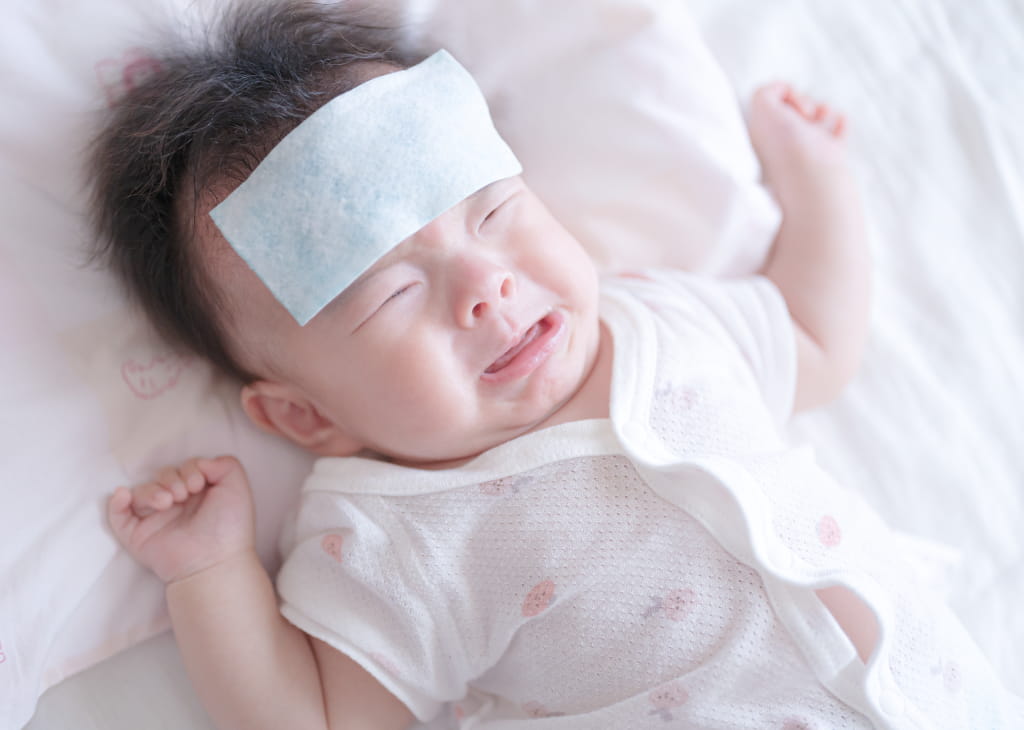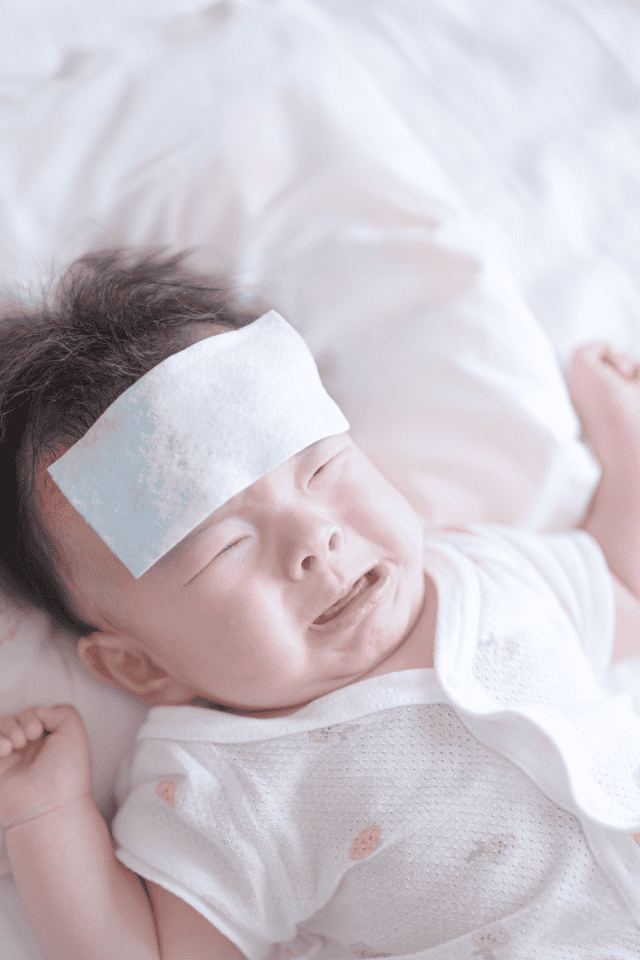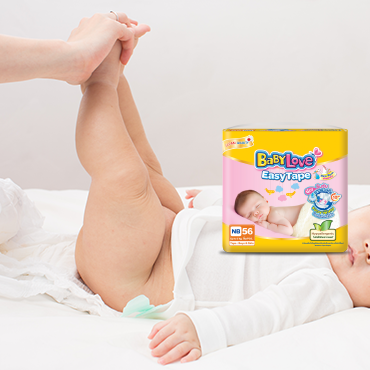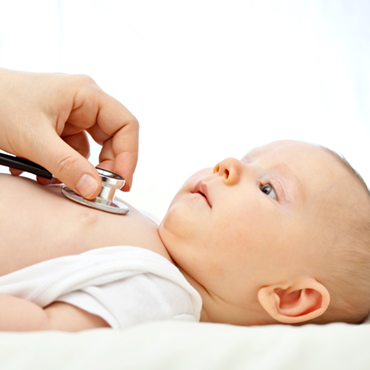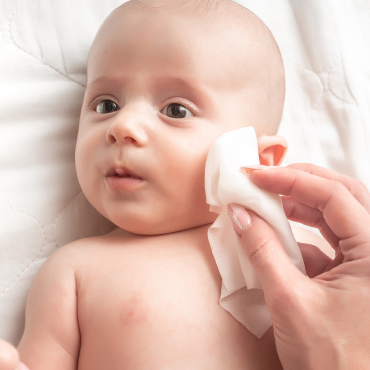One of the health concerns that causes parents anxiety is ‘Respiratory System Illnesses,’ which are common in children and can sometimes be more severe and dangerous than expected. Furthermore, there is the aggressive hMPV virus that parents need to be aware of during the rainy season. In this article, the doctor will help parents learn more about their child's ‘Respiratory System Illnesses.’
Your child's respiratory system can be divided by location into:
-
Upper Respiratory Tract includes the nostrils, nasal cavity, sinuses, pharynx, tonsils, adenoids, and larynx.
-
Lower Respiratory Tract includes the trachea (windpipe), bronchioles, and lungs.
Let’s take a look at the ‘Respiratory System Illnesses’ commonly found in children.
Acute Respiratory Infection
1. The Common Cold
The common cold is the most frequently encountered acute respiratory infection in children. It can occur
in both the upper respiratory tract (common cold, pharyngitis, sinusitis, croup, or laryngitis) and the lower respiratory tract (bronchitis, pneumonia). School-age children typically have a cold about 6–8 times per year. The cause of more than 60–70% of colds in children is viral, with over 200 different types of viruses. Common viral causes include Rhinovirus and Influenza A & B. However, the common cold can sometimes be caused by bacteria, such as the Streptococcus bacterium.A cold caused by a virus typically results in symptoms like fever, headache, body aches, sore throat, coughing, sneezing, clear runny nose, nasal congestion, stinging eyes, watery eyes, and red eyes. Most symptoms usually last about 5–7 days before the child fully recovers. If the cold is caused by bacteria, the mucus may be green or yellow from the first few days.
2. Acute Bronchitis and Pneumonia
The symptoms usually start like a common cold, but the coughing tends to be much more frequent and prolonged than a typical cold. Viruses that are common during the rainy season, such as RSV, Rhinovirus, hMPV, and Mycoplasma, often cause bronchitis in young children, which can progress to pneumonia. If your child develops pneumonia, they will often experience labored breathing, rapid breathing, lethargy, poor appetite, and a high fever. If you observe these symptoms, you should immediately take your child to see a doctor.
3. Nasal Cavity and Sinus Inflammation
This condition can be caused by both infection and allergies, and can be either acute or chronic. It may be caused by both viruses and bacteria. Symptoms of sinusitis include: thick, discolored nasal discharge, post-nasal drip (mucus flowing down the back of the throat), nasal congestion, cough, facial pain, fever, and foul breath/bad breath. These symptoms persist for longer than 1-2 weeks.
-
Hay Fever or Climate Sensitivity refers to allergies of the nose, such as allergies to dust mites, pollen, dog or cat dander, mold, cockroaches, PM 2.5 dust, various types of smoke from burning (e.g., cigarette smoke, incense smoke), or chemical odors. Your child will experience symptoms like a runny nose, itchy nose, sneezing, and nasal congestion that come and go. Symptoms often occur every morning and then gradually improve later in the morning. Sometimes the child may also experience itchy eyes, recurring nosebleeds, or severe nasal congestion that causes ear pain or muffled hearing. There may also be a family history of allergies.
-
Asthma Your child will experience recurring episodes of wheezing, coughing, and labored breathing (shortness of breath). Symptoms may occur while running or playing or sometimes late in the evening. The symptoms usually improve after administering a bronchodilator. There is often a prior history of skin allergies, allergic rhinitis, or food allergies, or a history of exposure to cigarette smoke from someone close to them.
-
Reactive Airway Disease This is a condition where the bronchial tubes are easily stimulated. It often occurs following certain viral infections (like RSV) or is an early sign of asthma. Your child will typically experience a severe cough or wheezing whenever they catch a cold, due to the irritation of the airways caused by the virus.
-
Enlarged Adenoids and Tonsils Your little one will exhibit symptoms like snoring, heavy breathing, restless sleep, and unsettled sleep. They will often prefer to sleep on their stomach or with their head elevated because it makes breathing easier. If the condition is severe, they may experience obstructive breathing or sleep apnea (breathing pauses) which forces them to sleep in a sitting position. This results in the child getting insufficient rest, leading to irritability, daytime sleepiness, reduced learning ability, and decreased concentration.
-
Airway Obstruction by a Foreign Object is caused by items such as food, small toys, or other foreign objects like beads becoming lodged in the airway. If a foreign object is stuck in the nostril for a long time, it can lead to infection, causing a green, foul-smelling nasal discharge on only the side with the object. However, if the object is aspirated (sucked) into the trachea or lungs, it can cause recurrent pneumonia in the same area where the object is blocking the airway.
Checklist of Suspicious Symptoms or Warning Signs for Your Child
- Chronic runny nose or nasal congestion that comes and goes, or noisy breathing.
- Coughing that comes and goes and has lasted for more than 1–2 weeks.
- Loud breathing or mouth breathing.
- Coughing so much that it disrupts the child's daily life.
- Coughing, labored breathing (shortness of breath), or wheezing when running, exercising, or when there's a change in the weather/air temperature.
- Snoring (with or without interrupted breathing/sleep apnea), frequent nosebleeds, or coughing up blood.
Tips to Reduce Risk and Methods for Prevention for Your Little One
-
Maintain complete physical health by ensuring your child eats all 5 food groups, gets enough sleep and rest, and exercises regularly.
-
Wash hands thoroughly and often. Avoid touching the face, nose, or mouth.
-
If your child begins to show signs of illness, it is recommended they rest at home until their symptoms improve.
-
Avoid crowded or congested places, such as shopping malls or movie theaters.
-
Always wear a mask when sick or when visiting crowded areas.
-
Avoid exposure to cigarette smoke, car exhaust fumes, or smoke from various types of burning.
-
Get vaccinated against various diseases. Recommended vaccines include the influenza (flu) vaccine and the IPD (Invasive Pneumococcal Disease) vaccine, which can help prevent respiratory tract infections.
A heartfelt thank to Ms. Piyarat ‘Ann’ Lertbannaphong, M.D., the specialized pediatrician.
Crated At 07/10/2025











